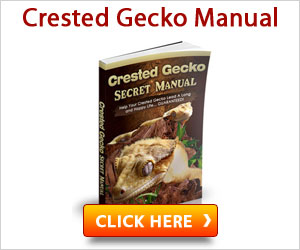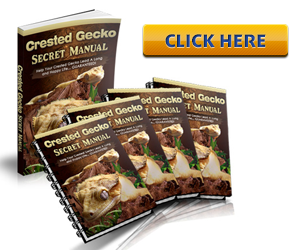Crested Gecko Health: Keeping Your Crested Gecko Fit and Healthy
Crested geckos are some of the easiest reptiles to keep as pets, providing that a few very simple rules are followed.Crested geckos require a nutrient and calcium rich balanced diet, in order for them to grow properly and live a long and healthy life. They also require a temperature gradient in order for them to thermo-regulate and better digest the nutrients in their food.
They also require plenty of space to move around, and being arboreal tree dwellers they also require a lot of climbing branches / perches. The most common health problems that occur in crested geckos in captivity are usually a result of one of the above not being offered, or not being offered to the correct standard.
Below you will find an insight into the most common of these problems and ways to ensure that they are prevented.
MBD: Metabolic Bone Disease in crested geckos:
Metabolic bone disease in crested geckos is most often caused due to a lack of the correct nutrients being provided in their diets. Metabolic bone disease is a deficiency of calcium, which results in the gecko utilising the calcium reserves from its own body and skeleton to supplement this lack in calcium. By using the reserves of calcium in its own body, the gecko’s skeleton is ‘warped’ and misshapen due to the bones becoming very weak and pliable.
This often results in permanent disfigurement of the gecko, especially in the form of bumps, twists and dips in the spine and a rotating of the hips, causing the tail to flop or jut-out at an unusual angle. Metabolic bone disease can also cause a weakening of the jaw, resulting in the crested gecko finding eating much more difficult.
The jaw is often too weak for the gecko to close it itself, and the jaw remains permanently open. Due to the weakening of the bones, MBD can also at its worst result in numerous broken bones.
A gecko with MBD finds it more difficult to climb, and often lose the ‘stickiness’ on their feet and tail. If a gecko with MBD falls from a height, broken bones are usually the result.
Metabolic bone disease in its latter stages is a horrific sight to witness, and the gecko is twisted and contorted out of recognition.
In younger and crested gecko breeding females it is extra important to supplement feeding properly. Hatchlings put a lot of calcium into bone growth, and breeding females use an extraordinary amount of calcium when producing eggs. Providing a healthy, nutrient rich and balanced gecko diet is the most foolproof way to help prevent your crested gecko developing MBD.
Preventing gecko Metabolic Bone Disease in crested geckos:
Gut load live food prior to feeding making them more nutritious
Dust live food with Nutrobal, Calcium, and/or Calcium D3
Provide a good staple gecko diet, we recommend Clarks or Repashy CGD powder
UVB light can also help to prevent MBD, as it helps the gecko to absorb and utilise the calcium in its diet more efficiently
Too much phosphorous in a diet can prevent calcium being absorbed. Avoid foods with high phosphorus content.
Floppy tail syndrome: FTS in crested geckos
Floppy tail syndrome in crested geckos is when the gecko’s tail literally flops in an abnormal direction. It is most noticeable when the gecko is laying upside-down, flat against the side of its enclosure, at which point the tail usually flops down over its head or at a jaunty angle.
A healthy gecko tail would rest against the glass in its natural position.?
It is thought that Floppy tail syndrome results mainly from a captive environment as crested geckos in the wild would rarely come across a surface as flat, smooth and vertical as an enclosure wall.
It is believed that this flat surface is what can contribute to FTS in crested geckos, as laying on this vertical surface for extended periods of time results in the tail ‘flopping’ over due to gravity, and weakens the muscles at the tails base.
At its worst, floppy tail syndrome is believed to be able to twist the pelvis of the gecko, predominantly due to the excessive weight put on the pelvic area when the tail flops to the side.
Due to this it is not advised to breed a female crested gecko with FTS, as she could well encounter problems trying to pass the eggs.
Choosing a healthy crested gecko:
A healthy crested gecko:
- Will have clean and clear nose and eyes. Eyes will be bright and shiny and will not be sunken into the head.
- Will not have layers of retained shed skin stuck at its extremities. Healthy geckos shed in a few hours and shed should not remain much longer than this.
- Will not be dehydrated: Dehydrated geckos will have loose skin, sunken eyes and will be somewhat lethargic. Dehydration often results in the gecko looking thin in comparison to a well hydrated gecko.
- Will be alert when handled, a unhealthy animal will be limp and possibly shaky in your hand and will show little to no interest or reaction in being handled
- Should have a plump, straight tail that can ‘grasp’ onto objects. A good test of this is if the gecko wraps its tail around your finger.
- Should have almost Velcro like feet. If the gecko is failing to stick/climb – this can be a sign of MBD or retained shed.



